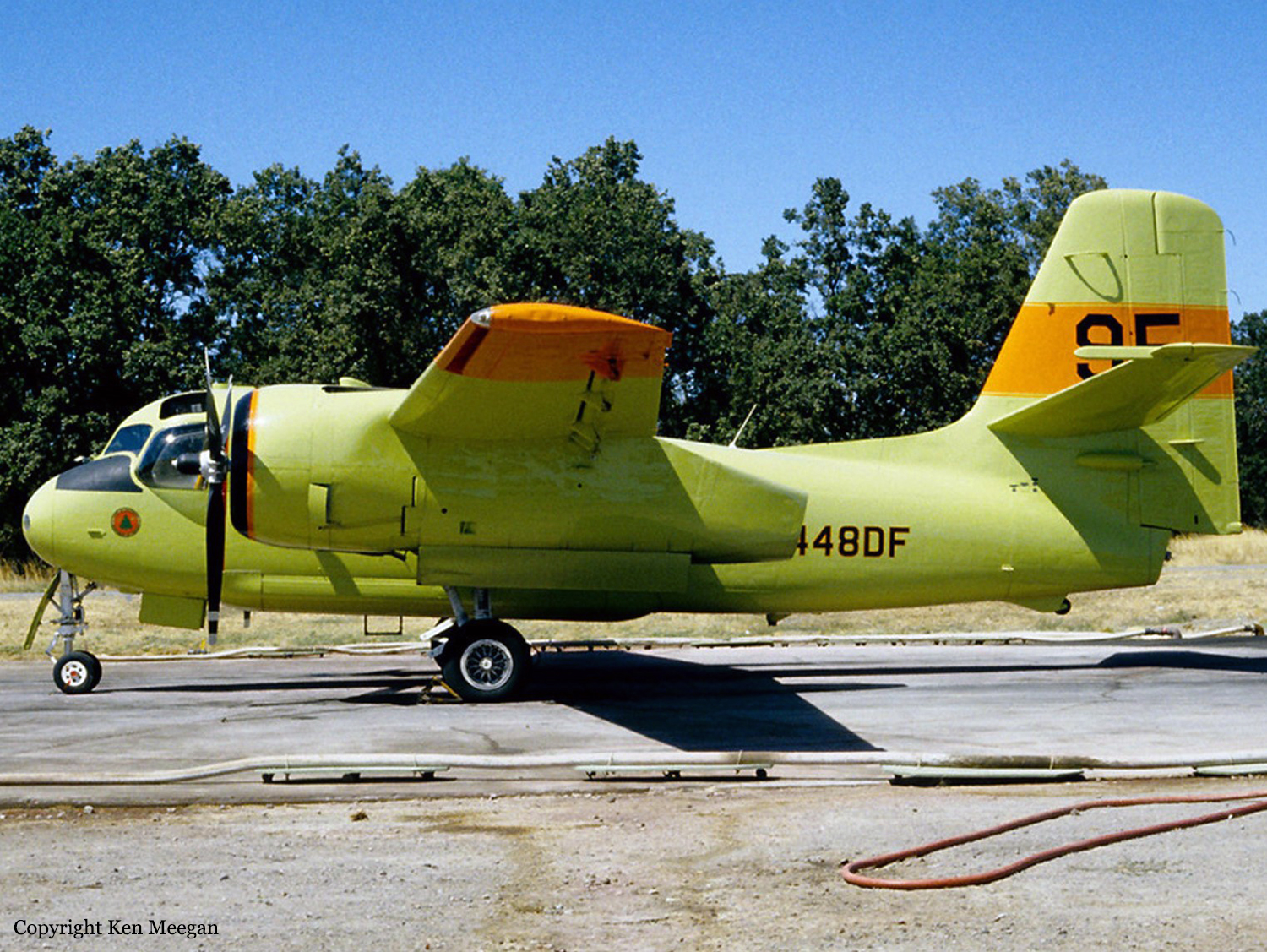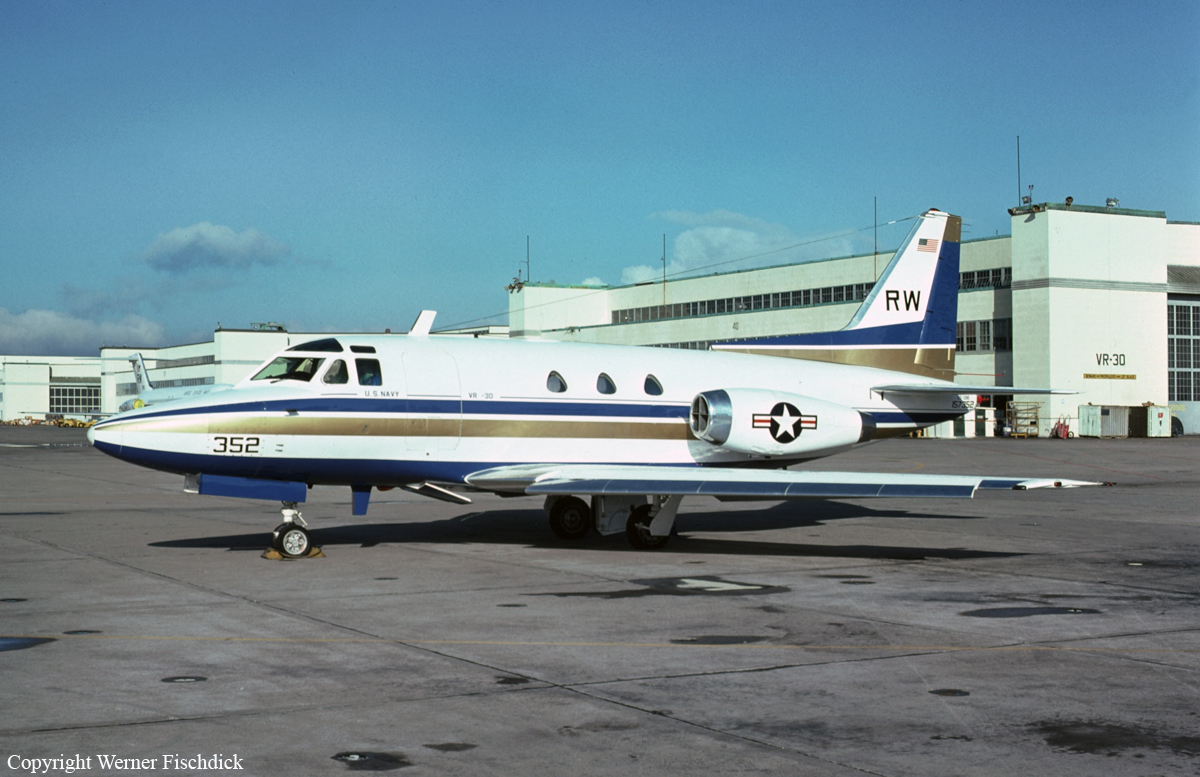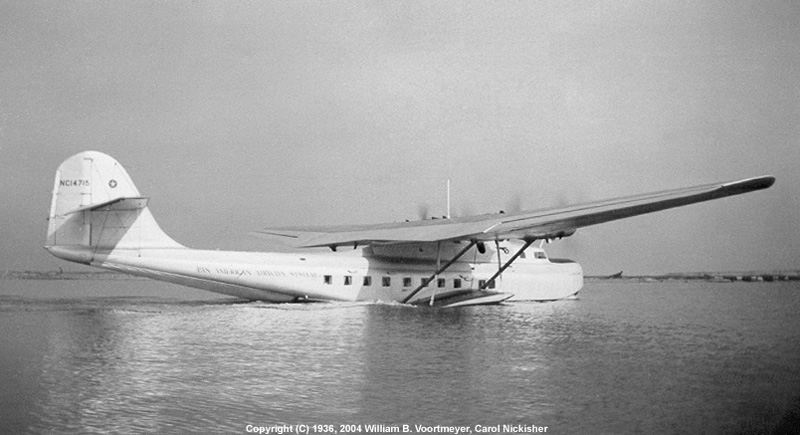Zone
Crash of a Cessna 402C in Sacramento
Date & Time:
Jan 23, 2003 at 2030 LT
Registration:
N6814A
Survivors:
Yes
Schedule:
Ukiah – Sacramento
MSN:
402C-0645
YOM:
1982
Crew on board:
1
Crew fatalities:
Pax on board:
0
Pax fatalities:
Other fatalities:
Total fatalities:
0
Captain / Total hours on type:
350.00
Aircraft flight hours:
13817
Circumstances:
The airplane collided with obstructions following a loss of power in one engine during a missed approach. Following the collision sequence the airplane came to rest upright about 500 feet from the approach end of the runway and was destroyed in a post-impact ground fire. The pilot told a responding sheriff's deputy and a Federal Aviation Administration (FAA) inspector that he made the ILS approach to land and initiated a missed approach. When he added power, the left engine sputtered and the airplane veered to the left. He activated the fuel boost pump, but the airplane contacted obstructions and crashed. The responding sheriff's deputy also observed the accident. He heard an engine of an airplane making unusual sounds. The engine "seemed to get quiet and then revved higher as if to climb." He looked in the direction of the sound and saw a series of blue flashes and then an orange fireball. The deputy reported that there was a dense fog in the area at the time. At the time of the accident, the airport's weather conditions were reported as 100 feet overcast and 1/4-mile visibility in fog. The landing minimums for the ILS approach are 200 feet and 1/2-mile. According to the operator's records, when the airplane departed from Ukiah, its gross takeoff weight was about 5,909 pounds. The pilot operating handbook (POH) for the airplane lists the following items in the single engine go around checklist: 1) Throttle full forward; 2) wing flaps up; 3) when positive climb rate achieved, gear up; 4) ensure the inoperative engine is feathered. For a gross weight of 5,900 pounds, and the existing atmospheric conditions, the single engine climb performance chart shows an expected positive rate of climb of 500 feet per minute if the airplane was configured correctly. The chart also lists the following subtractions from that performance for the listed condition: 1) -400 fpm for wind milling inoperative engine; 2) -350 feet for landing gear down; 3) -200 fpm for flaps extended to 15 degrees. Examination of the wreckage disclosed that neither engine's propeller was feathered, the landing gear was down and the flaps were extended to 10 degrees. Without the airplane configured correctly for the single engine missed approach, the net climb performance would be a negative 400 feet per minute. There were no discrepancies noted with the airframe examination. The engine examination revealed no mechanical anomalies with either engine that would have precluded normal operation. 14 CFR 135.224 states that a pilot cannot initiate an approach if the weather conditions are below landing minimums if the approach is started outside of the final approach fix. The pilot can continue the landing if they are already established on the approach and the airport goes below landing minimums. According to the operator's FAA approved operating specifications, the operator had not been approved for lower than standard landing minimums.
Probable cause:
Loss of engine power in the left engine for undetermined reasons. Also causal was the pilot's failure to correctly configure the airplane for a single engine missed approach, which resulted in a negative climb performance. A factor was the pilot's decision to initiate the approach when the weather conditions were below the published approach minimums.
Final Report:
Crash of a Grumman S-2E Tracker in Hopland: 1 killed
Date & Time:
Aug 27, 2001 at 1840 LT
Registration:
N450DF
Survivors:
No
Schedule:
Ukiah - Ukiah
MSN:
421
YOM:
1954
Flight number:
Tanker 87
Crew on board:
1
Crew fatalities:
Pax on board:
0
Pax fatalities:
Other fatalities:
Total fatalities:
1
Captain / Total hours on type:
1294.00
Aircraft flight hours:
10354
Circumstances:
During an aerial fire suppression mission for the California Department of Forestry (CDF), two Grumman TS-2A airplanes, operating as Tanker 92 (N442DF) and Tanker 87 (N450DF), collided in flight while in a holding pattern awaiting a retardant drop assignment on the fire. All of the airplanes fighting the fire were TS-2A's, painted in identical paint schemes. The Air Tactical Group Supervisor (AirTac) was orbiting clockwise 1,000 feet above the tankers, who were in a counterclockwise orbit at 3,000 feet mean sea level (msl). The pilots of both aircraft involved in the collision had previously made several drops on the fire. Records from the Air Tac show that Tankers 86, 91, and 92 were in orbit, and investigation found that Tanker 87 was inbound to enter the orbit after reloading at a nearby airport base. AirTac would write down the tanker numbers as they made their 3-minutes-out call, and usually ordered their drops in the same order as their check-in. The AirTac's log recorded the sequence 86, 91, 21, and 92. The log did not contain an entry for Tanker 87. Other pilots on frequency did not recall hearing Tanker 87 check in. Based on clock codes with 12-o'clock being north, the tankers were in the following approximate positions of the orbit when the collision occurred. Tanker 92 was at the 2-o'clock position; Tanker 86 was turning in at the 5-o'clock position; and Tanker 91 was in the 7-o'clock position. The AirTac's log indicated that Tanker 92 was going to move up in sequence and follow Tanker 86 in order to drop immediately after him. Post accident examination determined that Tanker 92's flaps were down, indicating that the pilot had configured the airplane for a drop. Tanker 92 swung out of the orbit wide (in an area where ground witnesses had not seen tankers all day) to move behind Tanker 86, and the pilot would likely have been focusing on Tanker 86 out of his left side window. Tanker 87 was on line direct to the center of the fire on a path that witnesses had not observed tankers use that day. Reconstruction of the positions of the airplanes disclosed that Tankers 86 and 91 would have been directly in front of Tanker 87, and Tanker 92 would have been wide to his left. Ground witnesses said that Tanker 87 had cleared a ridgeline just prior to the collision, and this ridgeline could have masked both collision aircraft from the visual perspective of the respective pilots. The right propeller, engine, and cockpit of Tanker 92 contacted and separated the empennage of Tanker 87. The propeller chop was about 47 degrees counterclockwise to the longitudinal axis of Tanker 87 as viewed from the top. The collision appeared to have occurred about 2,500 feet, which was below orbit altitude. CDF had no standard operating manual, no established reporting or entry point for the holding orbits, and a tanker could enter any point of the orbit from any direction. While no standardized procedures were encoded in an operating manual, a CDF training syllabus noted that a tanker was not to enter an orbit until establishing positive radio contact with the AirTac. The entering tanker would approach 1,000 feet below AirTac's altitude and stay in a left orbit that was similar to a salad bowl, high and wide enough to see and clear all other tankers until locating the tanker that it was to follow, then adjust speed and altitude to fall in behind the preceding airplane.
Probable cause:
The failure of both pilots to maintain an adequate visual lookout. The failure of the pilot in Tanker 87 to comply with suggested procedures regarding positive radio contact and orbit entry was a factor.
Final Report:
Crash of a Grumman S-2E Tracker in Hopland: 1 killed
Date & Time:
Aug 27, 2001 at 1840 LT
Registration:
N442DF
Survivors:
No
Schedule:
Ukiah - Ukiah
MSN:
255
YOM:
1952
Flight number:
Tanker 92
Crew on board:
1
Crew fatalities:
Pax on board:
0
Pax fatalities:
Other fatalities:
Total fatalities:
1
Captain / Total hours on type:
340.00
Aircraft flight hours:
9868
Circumstances:
During an aerial fire suppression mission for the California Department of Forestry (CDF), two Grumman TS-2A airplanes, operating as Tanker 92 (N442DF) and Tanker 87 (N450DF), collided in flight while in a holding pattern awaiting a retardant drop assignment on the fire. All of the airplanes fighting the fire were TS-2A's, painted in identical paint schemes. The Air Tactical Group Supervisor (AirTac) was orbiting clockwise 1,000 feet above the tankers, who were in a counterclockwise orbit at 3,000 feet mean sea level (msl). The pilots of both aircraft involved in the collision had previously made several drops on the fire. Records from the Air Tac show that Tankers 86, 91, and 92 were in orbit, and investigation found that Tanker 87 was inbound to enter the orbit after reloading at a nearby airport base. AirTac would write down the tanker numbers as they made their 3-minutes-out call, and usually ordered their drops in the same order as their check-in. The AirTac's log recorded the sequence 86, 91, 21, and 92. The log did not contain an entry for Tanker 87. Other pilots on frequency did not recall hearing Tanker 87 check in. Based on clock codes with 12-o'clock being north, the tankers were in the following approximate positions of the orbit when the collision occurred. Tanker 92 was at the 2-o'clock position; Tanker 86 was turning in at the 5-o'clock position; and Tanker 91 was in the 7-o'clock position. The AirTac's log indicated that Tanker 92 was going to move up in sequence and follow Tanker 86 in order to drop immediately after him. Post accident examination determined that Tanker 92's flaps were down, indicating that the pilot had configured the airplane for a drop. Tanker 92 swung out of the orbit wide (in an area where ground witnesses had not seen tankers all day) to move behind Tanker 86, and the pilot would likely have been focusing on Tanker 86 out of his left side window. Tanker 87 was on line direct to the center of the fire on a path that witnesses had not observed tankers use that day. Reconstruction of the positions of the airplanes disclosed that Tankers 86 and 91 would have been directly in front of Tanker 87, and Tanker 92 would have been wide to his left. Ground witnesses said that Tanker 87 had cleared a ridgeline just prior to the collision, and this ridgeline could have masked both collision aircraft from the visual perspective of the respective pilots. The right propeller, engine, and cockpit of Tanker 92 contacted and separated the empennage of Tanker 87. The propeller chop was about 47 degrees counterclockwise to the longitudinal axis of Tanker 87 as viewed from the top. The collision appeared to have occurred about 2,500 feet, which was below orbit altitude. CDF had no standard operating manual, no established reporting or entry point for the holding orbits, and a tanker could enter any point of the orbit from any direction. While no standardized procedures were encoded in an operating manual, a CDF training syllabus noted that a tanker was not to enter an orbit until establishing positive radio contact with the AirTac. The entering tanker would approach 1,000 feet below AirTac's altitude and stay in a left orbit that was similar to a salad bowl, high and wide enough to see and clear all other tankers until locating the tanker that it was to follow, then adjust speed and altitude to fall in behind the preceding airplane.
Probable cause:
The failure of both pilots to maintain an adequate visual lookout. The failure of the pilot in Tanker 87 to comply with suggested procedures regarding positive radio contact and orbit entry was a factor.
Final Report:
Crash of a Grumman TS-2A Tracker in Laytonville: 1 killed
Date & Time:
Aug 20, 1978 at 1746 LT
Registration:
N448DF
Survivors:
No
Schedule:
Ukiah - Ukiah
MSN:
179
YOM:
1957
Flight number:
Tanker 95
Crew on board:
1
Crew fatalities:
Pax on board:
0
Pax fatalities:
Other fatalities:
Total fatalities:
1
Captain / Total hours on type:
1912.00
Circumstances:
While completing a low pass during a fire fighting mission, the airplane struck trees and crashed in flames. The pilot, sole on board, was killed.
Probable cause:
Collision with trees and subsequent crash during low pass after the pilot misjudged distance, speed and altitude. The following contributing factors were reported:
- Failed to maintain flying speed,
- High obstructions.
- Failed to maintain flying speed,
- High obstructions.
Final Report:

Crash of a Rockwell T-39E Sabreliner near Ukiah: 2 killed
Date & Time:
Dec 21, 1975 at 1055 LT
Registration:
157352
Survivors:
No
Schedule:
Alameda - Alameda
MSN:
282-46
YOM:
1965
Crew on board:
2
Crew fatalities:
Pax on board:
0
Pax fatalities:
Other fatalities:
Total fatalities:
2
Circumstances:
The crew departed Alameda NAS for a training mission when the airplane crashed in unknown circumstances in a mountainous area located 11 miles south of Ukiah. Both pilots were killed.

Crash of a Martin M.130 China Clipper near Ukiah: 19 killed
Date & Time:
Jan 21, 1943 at 0725 LT
Registration:
NC14715
Survivors:
No
Schedule:
Honolulu – San Francisco
MSN:
557
YOM:
1935
Flight number:
V1104
Crew on board:
9
Crew fatalities:
Pax on board:
10
Pax fatalities:
Other fatalities:
Total fatalities:
19
Aircraft flight hours:
14628
Circumstances:
At the end of the night, while overflying the Pacific ocean off the Californian coast, the radio navigator contacted San Francisco ATC to inform about an estimated time of arrival at 0710LT, nearly three hours ahead the schedule. Approaching San Francisco from the north, in limited visibility due to the night and poor weather conditions, while at an altitude of 2,500 feet, the seaplane named 'Philippine Clipper' impacted the slope of a mountain located 11 km southwest of Ukiah. Extensive emergency resources were dispatched to the scene where no survivors were found among the 19 occupants.
Crew:
Robert M. Elzey, pilot,
Orvan K. Judd, copilot,
John R. Maynard, copilot,
George FH, Aabel, copilot,
Leo A. Mackota, flight engineer,
John J. Eagen, flight engineer,
Clarence P. Thompson, radio operator,
George W. Angus, radio operator,
John G. Hill, steward.
Passengers:
Robert English,
Cpt Robert H. Smith,
Cpt Robert E. Thomas,
Cpt Donald C. Godwin,
Cdr John J. Crane,
Cdr Francis L. Black,
Cdr William G. Myers,
L/Cdr John O. R. Coll,
L/Cdr George R. Stone,
Lt Edna O. Morrow.
Crew:
Robert M. Elzey, pilot,
Orvan K. Judd, copilot,
John R. Maynard, copilot,
George FH, Aabel, copilot,
Leo A. Mackota, flight engineer,
John J. Eagen, flight engineer,
Clarence P. Thompson, radio operator,
George W. Angus, radio operator,
John G. Hill, steward.
Passengers:
Robert English,
Cpt Robert H. Smith,
Cpt Robert E. Thomas,
Cpt Donald C. Godwin,
Cdr John J. Crane,
Cdr Francis L. Black,
Cdr William G. Myers,
L/Cdr John O. R. Coll,
L/Cdr George R. Stone,
Lt Edna O. Morrow.
Probable cause:
Failure of the captain to determine his position accurately before descending to a dangerously low altitude under extremely poor weather conditions during the hours of darkness. Controlled flight into terrain.
Final Report:




